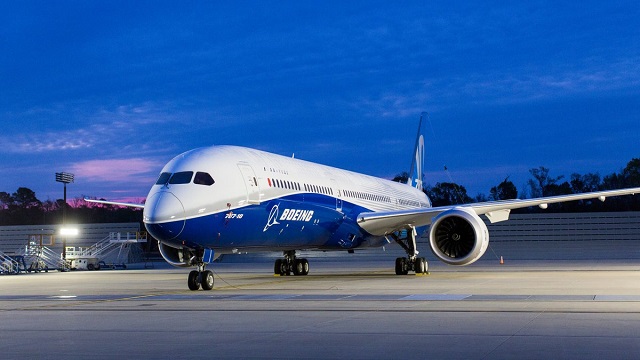
Singapore, Singapore | AFP | Smaller planes will dominate aviation orders worldwide in the next 20 years, driven by the needs of budget airlines in emerging markets like Southeast Asia, Boeing said Friday.
Nearly three in four of the 41,030 new commerical planes expected to be delivered in the period at a cost of $6.1 trillion will be single-aisle, according to the US aircraft maker.
“As you would expect because of the dominance of (low cost carriers) and requirements to connect shorter ranges, 72 percent of units will be in the single-aisle category,” Dinesh Keskar, Boeing’s senior vice president for Asia-Pacific and India sales, said at a briefing in Singapore.
Southeast Asia is one of the world’s fastest-growing regions for budget air travel, with an expanding middle class driving a travel boom.
Boeing said it has hiked its forecast for the number of new aircraft to be delivered in Southeast Asia in the next two decades to 4,210 — up 460 on last year’s prediction.
“This is a testament to how this region is growing, how the infrastructure is coping,” said Keskar.
Passenger traffic growth in most of the region is in double digits, with Malaysia, Vietnam, Thailand and Indonesia among the leaders, Keskar added.
He said 39 percent of all new planes in the next two decades will be destined for Asia, trailed by 21 percent for North America and 19 percent for Europe.
Single-aisle planes favoured by budget airlines, such as Boeing’s 737 MAX and Airbus’ A320, are projected to account for 77 percent of the market share in Southeast Asia, he added.
He said the company remains optimistic despite concerns about overcapacity as Southeast Asian governments build new airports and improve existing ones.
4,210 new airplanes, $650 billion, over 10% of global demand. See our 20 year forecast for SE Asia here: https://t.co/slJ4D97T2N pic.twitter.com/TMp2q5445j
— Boeing Airplanes (@BoeingAirplanes) September 22, 2017
 The Independent Uganda: You get the Truth we Pay the Price
The Independent Uganda: You get the Truth we Pay the Price




These Asian countries were struggling economically in the 1950s after first and second world wars. Colonial countries mostly in Africa were really raising up economically on the world stage like the USA at that time. Something is really happening badly these days to see that these African countries’ economies are now not as good as expected.